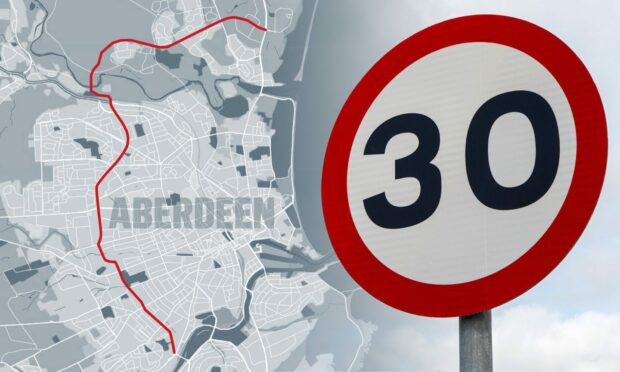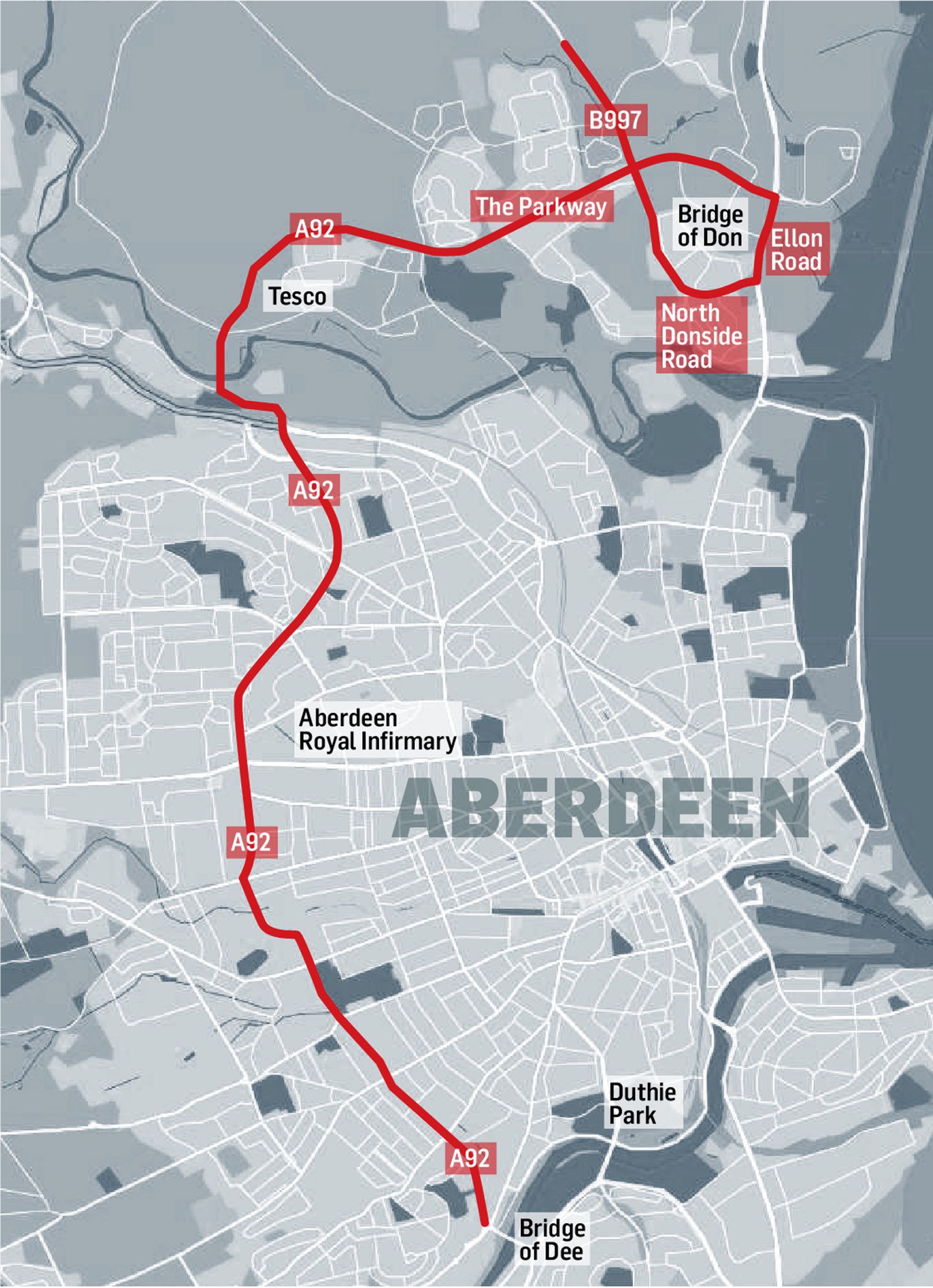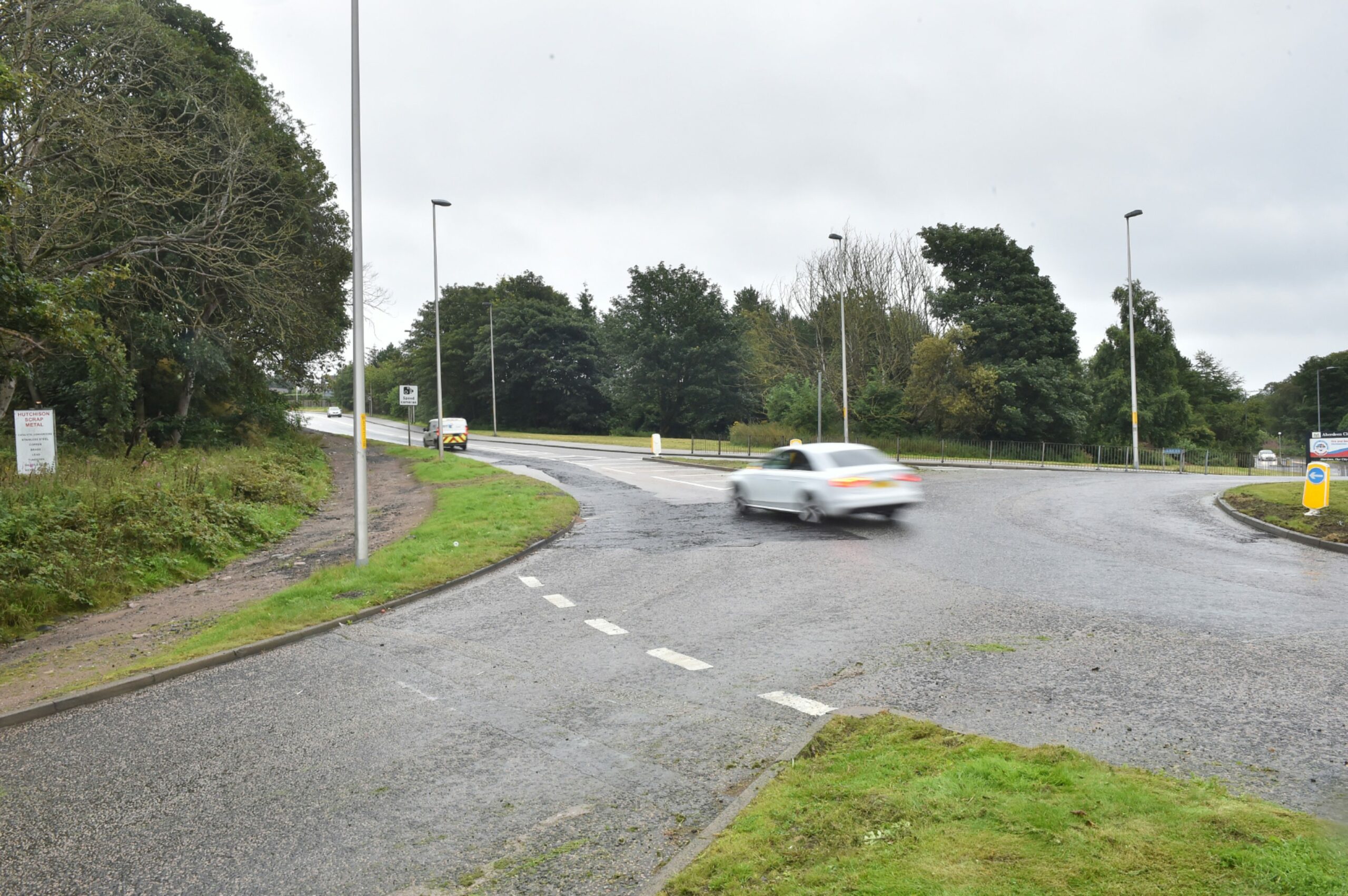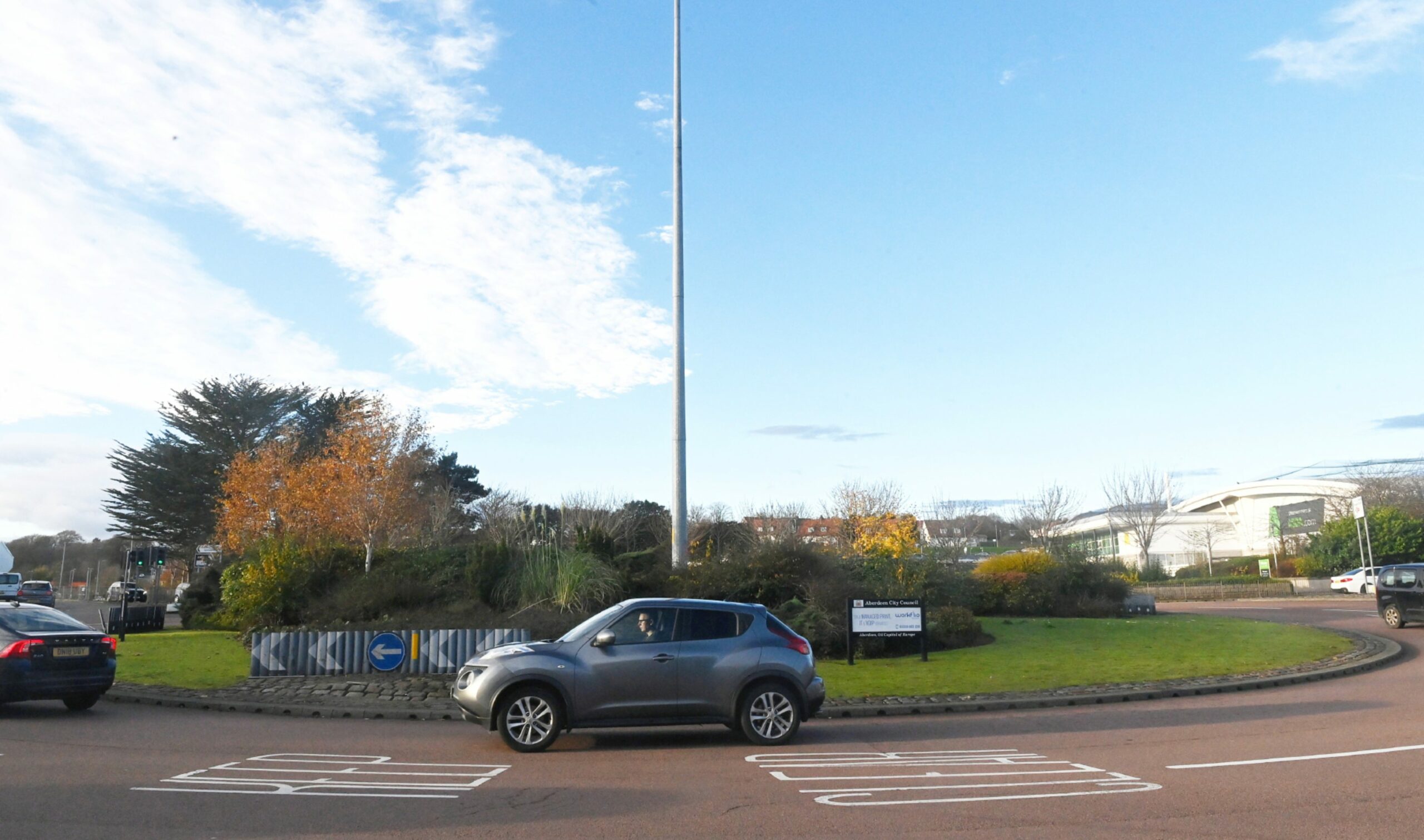A 30mph speed limit could be put in place on the A92 between the Bridge of Dee and the Bridge of Don in Aberdeen.
Aberdeen City Council is currently working on efforts to improve transport links along what’s called the A92 transport corridor.
The corridor goes all the way from Stonehaven to Aberdeen, but next week the council will be looking at proposals for just the northern section of it.
This section extends all the way north from Garthdee, along South Anderson Drive and North Anderson Drive, across the River Don and east along the Parkway to the middle of the community of the Bridge of Don.
Following consultation work earlier this year, officers have now come back with a list of 16 options for councillors to consider which could change how everyone journeys along the A92, not just motorists.
The options include restricting speed limits to 30mph along the A92, implementing two-way segregated cycle lanes, and even replacing “some or all roundabouts” with signalised junctions.
What is the council hoping to achieve?
As part of the work, the council drew up six “transport planning objectives” for what it wants changes to the A92 and surrounding areas to achieve.
They include:
- Reducing the environmental impact of traffic on the A92 corridor.
- Improving journey times and journey time reliability for emergency vehicles and buses, “especially so that bus journey times can be more competitive than car”.
- Reducing “real and perceived” road safety risks for all modes of transport.
The local authority’s officers have drawn up a list of 16 options for the future of the A92, taking into consideration different kinds of transport users, such as car drivers, cyclists, pedestrians, and bus users.
As well as 30mph limit, what are all the options the council is considering?
Officers came up with the options following consultation exercises, as well as an “initial extensive review of the problems and opportunities along the corridor”.
Initially, 42 options were identified, but this was narrowed down in order to eliminate any that were “clearly undeliverable” or conflict with the aforementioned objectives.
Here are all the 16 real potential options, broken down by the mode of transport each one addresses.
Cycling and pedestrians
- Implement new/improved active travel crossings at junctions and key desire lines along the A92 corridor.
- Implement two-way segregated cycle lanes throughout the A92 corridor.
- Implement two-way segregated cycle lanes (or shared use paths) on those parts of the A92 corridor where demand is likely to be the greatest.
- Implement cycle routes on parallel routes to the A92 corridor, away from main roads where possible.
- Improve the quality of surfacing of foot and cycle paths throughout the corridor.
- Improve the quality and extent of street/path lighting along the corridor.
- Ensure cyclists are given priority over vehicular traffic when on segregated routes that cross side roads.
- Review the need for existing pedestrian guardrail on the corridor and consider removal if safe to do so.
- Review and improve active travel signage throughout the corridor.
- Implement early release signals for cyclists at all signalised junctions (new and existing) along the A92 corridor
Bus travel
- Consider the introduction of orbital bus services, which avoid interchange in the city centre
- Implement robust bus priority measures on constrained sections of the A92
- Implement robust bus priority measures on key constrained radial approaches to the A92 corridor
- Review accessibility to bus stops along the corridor
General infrastructural changes
- Replace some or all roundabouts on corridor with signalised junctions to enable improved bus priority and safer crossings for pedestrians and cyclists
- Introduce a 30mph speed limit along the length of the A92 to improve road safety.
The A92 transport corridor includes a number of major roundabouts in Aberdeen, including the Bridge of Dee roundabout, the King’s Gate roundabout, and the infamous Haudagain roundabout.
What comes next?
Councillors at next week’s City Growth and Resources committee will be recommended to allow for appraisal work to move forwards on the 16 options.
If elected members follow the recommendation, a report will come back to the council in autumn 2023 on all the implications each of the options brings.








Conversation